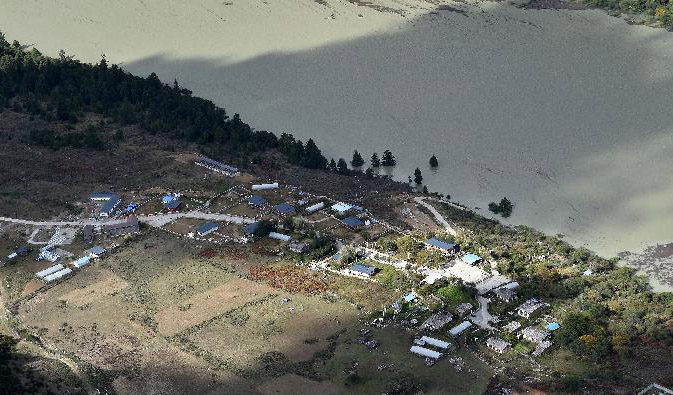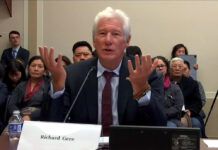
(TibetanReview.net, Oct20, 2018) – Water levels at a barrier lake formed as a result of a landslide in the morning of Oct 17 over the Yarlung Tsangpo river in Tibet’s Menling County of Nyingtri (Chinese: Lingzhi) City were falling after a breach on Oct 19 afternoon, apparently without damages, reported China’s official Xinhua news agency Oct 19. However, downstream Indian states of Assam and Arunachal Pradesh are expected to face a major disaster as a result of it.
Xinhua previously reported, before the breach, that the water level at the barrier lake was keeping on rising at 0.6 metres per hour and might require further evacuation of residents. And the official chinadaily.com.cn Oct 19 said more than 20,000 people in Menling and Medog counties were affected, although the Xinhua report on the same day put that figure at 16,000.
The chinadaily.com.cn report cited local disaster relief headquarters as saying the amount of water in the lake, formed near Gyalha Village, had reached 550 million cubic metres as of 9am Oct 19.
In addition to the Oct 17 early morning landslide, another landslide was reported to have struck the same area Oct 18 morning.
The total number of people evacuated from the area was reported to be 7,100 as of 5:00pm Oct 18.
This was the second major geological disaster in less than a week in Tibet Autonomous Region. On Oct 11, the Jinsha River, in the upper reaches of the Yangtze River (Tibetan: Drichu), was blocked by a landslide, creating a barrier lake in Chamdo City. Besides, China’s Ministry of Emergency Management warned on Oct 13 that the possibility of another landslide near the first landslide site had grown.
Local residents have been cited as saying China’s mining, construction activities as well as deforestation for plunder of Tibet’s timber resource were to be blamed for the landslides.





